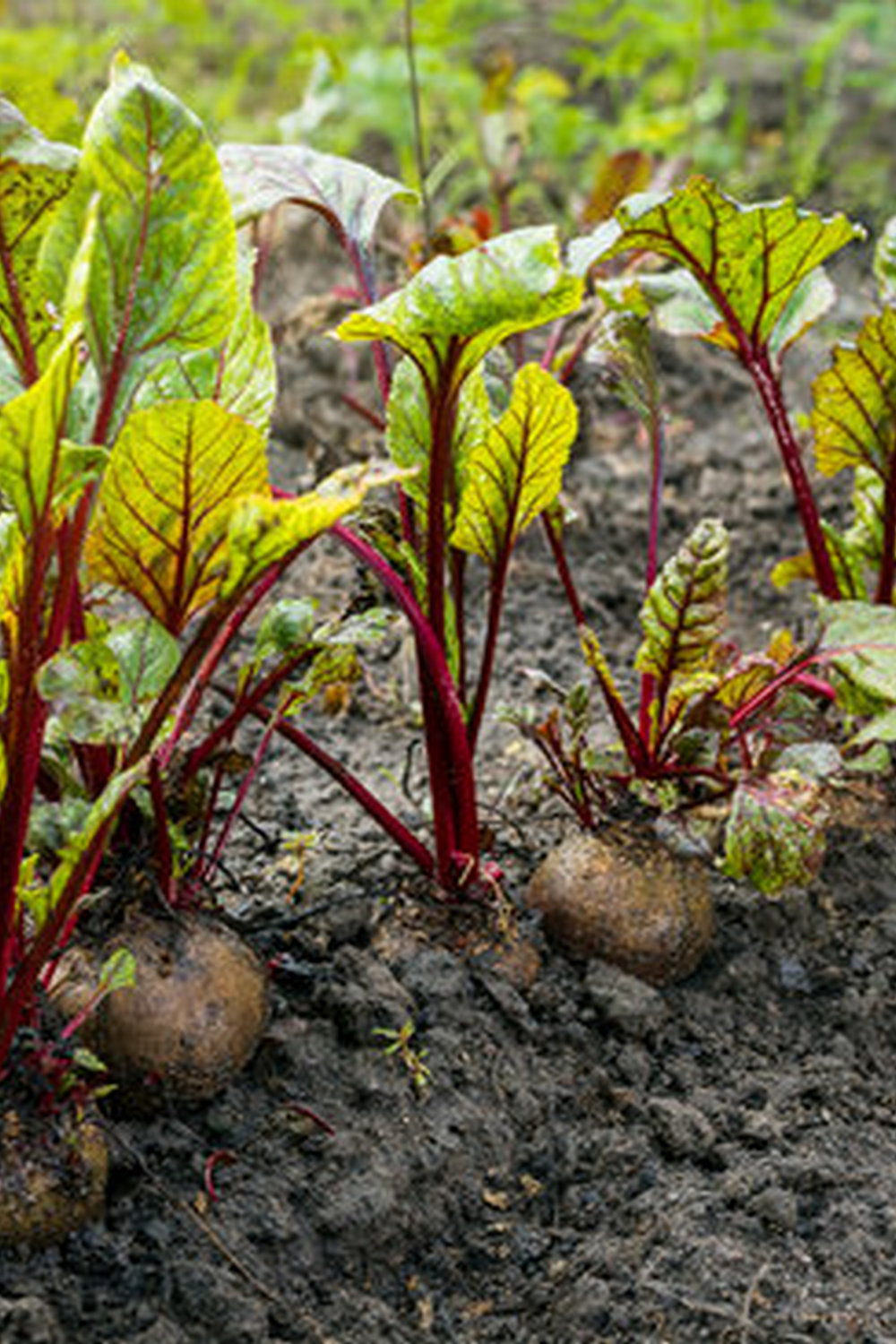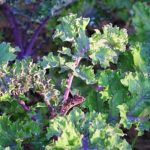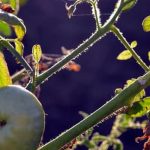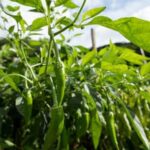Nutgrass control in vegetable gardens is a crucial aspect of maintaining a healthy and productive garden. Nutgrass, also known as nutsedge, can quickly take over vegetable plots if left unchecked, competing with crops for nutrients and water. In this article, we will delve into the various aspects of nutgrass control in vegetable gardens to help gardeners understand the threat posed by this stubborn weed.
Nutgrass is a common nuisance in gardens, identified by its grass-like appearance and triangular stems. Its ability to spread rapidly through underground tubers makes it a persistent problem for many gardeners. The impact of nutgrass on vegetables can be detrimental, leading to stunted growth, reduced yields, and even crop failure if not addressed promptly.
Preventing nutgrass infestations requires a combination of early detection, proper gardening practices, and regular maintenance. By understanding how nutgrass spreads and thrives in vegetable gardens, gardeners can implement strategies to prevent its establishment and minimize its impact on their crops. Stay tuned as we explore identification techniques, prevention tips, removal methods, and control strategies to effectively combat nutgrass in vegetable gardens.
Identification
Nutgrass, also known as nutsedge, can be a persistent and troublesome weed in vegetable gardens. Identifying nutgrass early is crucial in preventing it from spreading and causing significant damage to your vegetables. Here are some key features to help you spot nutgrass in your garden:
1. Leaf Appearance: Nutgrass leaves are typically elongated and narrow, with a prominent midrib that gives them a V-shaped appearance. The leaves can range in color from light green to yellowish-green.
2. Stem Characteristics: Nutgrass stems are triangular in cross-section, distinguishing them from the round stems of most grasses. The stems can grow upright, reaching heights of up to 3 feet.
3. Root System: Beneath the soil surface, nutgrass produces rhizomes and tubers that allow it to spread rapidly. These underground structures help nutgrass survive periods of drought and re-infest areas even after removal.
To effectively control nutgrass in your vegetable garden, it’s important to accurately identify this weed early on before it becomes widespread. Regularly inspecting your garden beds for the distinctive characteristics of nutgrass can help you detect its presence before it poses a serious threat to your vegetables.
When dealing with nutgrass control in vegetable gardens, early detection through proper identification is key to implementing timely prevention and removal strategies. By familiarizing yourself with the visual cues that distinguish nutgrass from other weeds, you can stay proactive in keeping this intrusive plant at bay and ensuring the health and productivity of your vegetable crops.
Impact
Nutgrass, also known as nutsedge, can wreak havoc in vegetable gardens if left unchecked. This invasive weed not only competes with your vegetables for essential nutrients, water, and sunlight but can also release chemicals that inhibit the growth of nearby plants.
The rapid spread of nutgrass can quickly overtake your vegetable beds, stunting the growth of your crops and reducing their overall productivity. It is crucial for gardeners to understand the potential impact nutgrass can have on their vegetable gardens in order to effectively combat this persistent weed.
Stunted Growth
One of the most visible signs of nutgrass infestation in a vegetable garden is the stunted growth of your crops. As nutgrass competes with vegetables for resources, it can severely limit their ability to grow and develop properly. Nutgrass has a dense root system that can penetrate deep into the soil, making it difficult for vegetables to establish strong roots and access necessary nutrients. This competition for resources can result in smaller yields and lower quality produce from your garden.
Spread of Disease
In addition to impeding the growth of vegetables, nutgrass can also contribute to the spread of diseases among your crops. When left uncontrolled, this weed creates a humid environment that encourages the growth of harmful fungi and bacteria.
These pathogens can infect your vegetables, leading to diseases that may further compromise their health and productivity. By allowing nutgrass to thrive in your garden, you are not only battling a persistent weed but also increasing the risk of disease outbreaks that could devastate your vegetable crops.
Choking Out Vegetables
Perhaps one of the most detrimental effects nutgrass can have on vegetable gardens is its ability to choke out surrounding plants. Nutgrass grows rapidly and spreads aggressively through both seeds and rhizomes, forming dense mats that cover the soil surface. These mats prevent proper air circulation around vegetables and block sunlight from reaching their leaves.
As a result, your crops may struggle to photosynthesize effectively, leading to weak and wilted plants. Nutgrass’s ability to smother neighboring vegetation underscores the importance of implementing effective control measures before it overtakes your entire garden.
Prevention
When it comes to nutgrass control in vegetable gardens, prevention is key to avoiding a full-blown infestation. One of the most effective ways to prevent nutgrass from taking over your garden is to properly prepare the soil before planting. Nutgrass thrives in compacted soil, so loosening the soil and adding organic matter such as compost can help create an inhospitable environment for nutgrass to grow.
Another important tip for preventing nutgrass in your vegetable garden is to avoid bringing contaminated soil or plant material into your garden. Nutgrass can easily spread through soil particles or rhizomes left on tools, shoes, or even plant containers. Be sure to clean and sanitize any equipment that has come into contact with nutgrass-infested areas before using them in your garden.
Utilizing mulch can also be effective in preventing nutgrass growth in your vegetable garden. A thick layer of organic mulch not only helps retain moisture and suppress weeds but also acts as a barrier against nutgrass rhizomes trying to establish themselves in your garden beds. By implementing these preventive measures, you can significantly reduce the chances of nutgrass taking over your vegetable garden.
| Preventive Tips | Implementation |
|---|---|
| Prepare Soil | Loosen soil, add compost |
| Avoid Contaminated Material | Clean and sanitize tools, containers |
| Use Mulch | Apply thick layer for weed suppression |
Removal Methods
Nutgrass, also known as nutsedge, can be a persistent and troublesome weed in vegetable gardens. Its aggressive nature can quickly take over your garden if left unchecked. To effectively control nutgrass in vegetable gardens, it is essential to employ proper removal methods that target the root cause of the issue.
One of the most common and effective ways to remove nutgrass from vegetable gardens is by hand-pulling. This method involves carefully digging out the entire plant, making sure to remove both the aboveground and underground parts of the weed. It is crucial to be thorough when hand-pulling nutgrass to prevent regrowth.
Another method for removing nutgrass is through cultivation. By regularly tilling the soil in your vegetable garden, you can disrupt the growth pattern of nutgrass and prevent it from spreading further. However, this method may also disturb the roots of your vegetables, so it should be done carefully to avoid damaging desirable plants.
Additionally, using mulch in your vegetable garden can help suppress nutgrass growth. Organic mulches like straw or wood chips not only provide a barrier against nutgrass but also help retain moisture in the soil and improve its overall health. Mulching can be a preventative measure as well as a way to manage existing nutgrass infestations.
| Removal Method | Effectiveness |
|---|---|
| Hand-pulling | Highly effective if done thoroughly |
| Cultivation | Effective but requires caution to avoid damaging other plants |
| Mulching | Preventative measure that helps suppress nutgrass growth |
Organic Control
Introduction to Organic Control
When it comes to dealing with nutgrass in your vegetable garden, opting for organic control methods can be not only effective but also environmentally friendly. Unlike chemical herbicides, organic approaches focus on using natural solutions to manage and eliminate the pesky weed without harming the surrounding plants or soil. By incorporating these eco-friendly practices into your gardening routine, you can effectively combat nutgrass infestations while promoting a healthier and more sustainable garden ecosystem.
Cultural Practices
One of the key aspects of organic nutgrass control is implementing cultural practices that create unfavorable conditions for the weed to thrive. This includes proper spacing between plants to limit competing root systems, regular mulching to suppress nutgrass growth, and practicing crop rotation to disrupt its life cycle. By maintaining good garden hygiene and utilizing these cultural techniques, you can significantly reduce the presence of nutgrass in your vegetable garden over time.
Natural Remedies
In addition to cultural practices, there are several natural remedies that can aid in controlling nutgrass organically. For example, applying vinegar or boiling water directly onto the weed can help kill it at the roots without resorting to harsh chemicals.
Other options include using organic herbicides made from ingredients like citrus oils or corn gluten meal, which can effectively target nutgrass while being safe for your vegetables and the environment. By incorporating these natural remedies into your nutgrass control strategy, you can achieve a healthy and thriving vegetable garden without compromising on sustainability.
Chemical Control
When it comes to tackling nutgrass infestations in vegetable gardens, sometimes using herbicides is necessary to effectively eradicate this persistent weed. Herbicides containing active ingredients such as glyphosate or imazapic can be effective in targeting and killing nutgrass, but it’s essential to follow the instructions carefully to prevent any negative effects on your vegetable crops.
Before applying any herbicides, it’s crucial to properly identify the nutgrass infestation in your garden. Nutgrass has distinctive characteristics such as triangular stems, purple-hued flowers, and tubers that resemble nuts or bulbs beneath the soil surface. Once you have confirmed the presence of nutgrass, choose an appropriate herbicide specifically formulated for controlling this weed in vegetable gardens.
When utilizing herbicides for nutgrass control in vegetable gardens, make sure to apply them selectively to avoid damaging desirable plants. Spot-treatment methods are commonly advised, where the herbicide is directly targeted at the nutgrass while avoiding contact with other vegetation.
Additionally, timing plays a crucial role in the effectiveness of herbicide applications – typically during the nutgrass growth stages when they are most susceptible to treatment. Regular monitoring and reapplication may be necessary to ensure complete eradication of nutgrass from your garden.
Overall, while chemical control through herbicide use can be effective in combating nutgrass infestations in vegetable gardens, it is important to exercise caution and adhere strictly to safety guidelines. When used correctly and as part of an integrated approach alongside prevention and removal methods, herbicides can help maintain a healthy and productive vegetable garden free from the threats of invasive weeds like nutgrass.
Maintenance
Once you have successfully removed nutgrass from your vegetable garden, it is important to implement strategies to prevent its return. Here are some maintenance tips to keep nutgrass under control in the long term:
1. Regular Monitoring: Conduct regular inspections of your vegetable garden to spot any new nutgrass growth early on. This will allow you to take immediate action before it spreads and becomes a bigger problem.
2. Mulching: Mulching around your vegetable plants can help suppress nutgrass growth by blocking sunlight and reducing soil temperature. Organic mulches like straw, wood chips, or shredded leaves can also improve soil health and moisture retention.
3. Proper Watering: Nutgrass thrives in moist conditions, so be diligent about watering your vegetable garden only when necessary. Avoid overwatering as this can create ideal conditions for nutgrass to take hold.
4. Crop Rotation: Rotate your vegetable crops each season to disrupt the life cycle of nutgrass and reduce its presence in the garden. This practice can also help improve soil fertility and reduce nutrient depletion.
By incorporating these maintenance strategies into your gardening routine, you can effectively keep nutgrass under control in the long term and enjoy a thriving vegetable garden free from this pesky weed. Remember that consistency is key when it comes to nutgrass control in vegetable gardens.
Conclusion
Nutgrass can be a persistent and troublesome weed in vegetable gardens, causing competition for nutrients and water, ultimately stunting the growth of crops. In order to maintain a healthy and productive garden, it is crucial to stay vigilant in identifying and controlling nutgrass infestations. By understanding the threat that nutgrass poses, gardeners can take proactive steps to prevent its spread and minimize its impact on their vegetables.
Prevention is key when it comes to nutgrass control in vegetable gardens. By implementing strategies such as regular weeding, mulching, and proper irrigation practices, gardeners can create conditions that are less favorable to nutgrass growth.
Additionally, choosing the right location for planting vegetables can make a significant difference in reducing the risk of nutgrass invasion. Taking these preventive measures will not only save time and effort in the long run but also contribute to the overall health of the garden ecosystem.
While there are various methods available for removing nutgrass from vegetable gardens, it is important to consider environmentally-friendly options first before turning to chemical herbicides. Organic control methods such as hand-pulling, solarization, and smothering techniques can effectively manage nutgrass populations without harming beneficial organisms or contaminating the soil. By practicing responsible gardening habits and staying proactive in nutgrass management, gardeners can enjoy a thriving vegetable garden free from the constraints of this invasive weed.
Frequently Asked Questions
How Do You Get Rid of Nut Grass in Vegetable Gardens?
Nut grass can be a troublesome weed in vegetable gardens, but there are methods to control it. One approach is hand-weeding to remove the entire plant, ensuring you pull out the underground tubers as well. Mulching can also help smother nut grass by blocking sunlight and suppressing its growth.
What Kills Nut Grass but Not Plants?
To effectively kill nut grass without harming other plants, one option is using herbicides specifically formulated for this purpose. Selective herbicides like sulfentrazone target nutsedges while leaving desirable garden plants unharmed. However, always read and follow the instructions on the product label to use it safely and effectively.
Can You Spray Sedgehammer on a Vegetable Garden?
It is not recommended to spray Sedgehammer on a vegetable garden because this herbicide is specifically designed to target sedges, including nutsedges, which are common lawn weeds. Using it in a vegetable garden may harm or even kill vegetable plants, leading to unintended damage to your crops.

If you’re looking to get into vegetable gardening, or are just looking for some tips on how to make your current garden better, then you’ve come to the right place! My name is Ethel and I have been gardening for years. In this blog, I’m going to share with you some of my best tips on how to create a successful vegetable garden.





